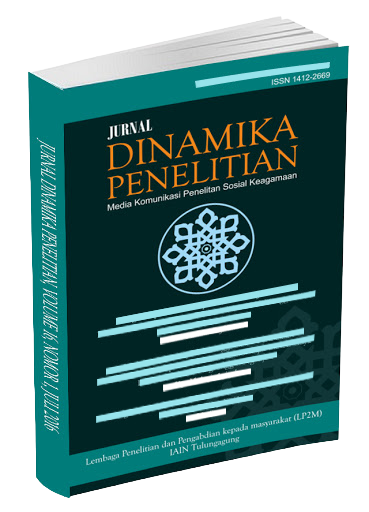Abstract
This study analyzes the impact of Carrier-Based Learning (CBL) on students' motivation and language proficiency in English language learning. Grounded in Self-Determination Theory (SDT) and the concept of situated learning, CBL integrates career-relevant tasks into the learning process to enhance intrinsic motivation and practical language skills. The research examines how CBL fosters autonomy, competence, and relatedness among students, leading to increased engagement and deeper learning. A comprehensive literature review methodology was employed to synthesize findings from various studies, highlighting the benefits and challenges of implementing CBL. Results indicate that CBL significantly improves students' motivation and language proficiency by providing authentic, meaningful learning experiences. However, successful implementation requires adequate teacher training and innovative assessment methods. This study underscores the importance of aligning language education with real-world career demands to prepare students for future professional success. The findings offer valuable insights for educators and policymakers on effectively integrating CBL into language curricula, promoting both academic and professional growth.
References
Bowen, G. A. (2009). Document Analysis as a Qualitative Research Method. Qualitative Research Journal, 9(2), 27–40.
Bransford, J. D., Brown, A. L., & Cocking, R. R. (2000). How People Learn: Brain, Mind, Experience, and School. National Academy Press.
Braun, V., & Clarke, V. (2006). Using thematic analysis in psychology. Qualitative Research in Psychology, 3(2), 77–101. https://doi.org/10.1191/1478088706qp063oa
Brown, J. S., Collins, A., & Duguid, P. (1989). Situated cognition and the culture of learning. Educational Researcher, 18(1), 32–42.
Canale, M., & Swain, M. (1980). Theoretical bases of communicative approaches to second language teaching and testing. Applied Linguistics, 1(1), 1–47.
Cantor, J. A. (1995). Experiential learning in higher education: Linking classroom and community (Issue 7). ASHE-ERIC Higher Education Report.
Creswell, J. W. (2013). Qualitative Inquiry and Research Design: Choosing Among Five Approaches. Sage Publications.
Deci, E. L., & Ryan, R. M. (2000). The “What” and “Why” of Goal Pursuits: Human Needs and the Self-Determination of Behavior. Psychological Inquiry, 11(4), 227–268.
Dewey, J. (1938). Experience and Education. Macmillan.
Ellis, R. (2006). Current Issues in the Teaching of Grammar: An SLA Perspective. TESOL Quarterly, 40(1), 83–107.
Euler, P. D. (2013). Germany’s dual vocational training system: a model for other countries? 78. http://chance-ausbildung.de/uploads/tx_itao_download/2013_Study_German_VET_System.pdf
Fink, A. (2014). Conducting Research Literature Reviews: From the Internet to Paper. Sage Publications.
Grant, M. J., & Booth, A. (2009). A Typology of Reviews: An Analysis of 14 Review Types and Associated Methodologies. Health Information & Libraries Journal, 26(2), 91–108.
Gulikers, J. T. M., Bastiaens, T. J., & Kirschner, P. A. (2004). Authenticity in Assessment: Theoretical Perspectives and Practical Implications. International Journal of Educational Research, 41(3), 283–299.
Harris, J., & Hofer, M. (2011). Technological Pedagogical Content Knowledge (TPACK) in action. Journal of Research on Technology in Education, 43(3), 211–229.
Hattie, J. (2009). Visible Learning: A Synthesis of Over 800 Meta-Analyses Relating to Achievement. Routledge.
Hmelo-Silver, C. E., Duncan, R. G., & Chinn, C. A. (2007). Scaffolding and achievement in problem-based and inquiry learning: A response to Kirschner, Sweller, and Clark (2006. Educational Psychologist, 42(2), 99–107.
Kolb, D. A. (1984). Experiential Learning: Experience as the Source of Learning and Development. Prentice Hall.
Lave, J., & Wenger, E. (1991). Situated Learning: Legitimate Peripheral Participation. Cambridge University Press.
Lomb, K. (2008). Polyglot: How I Learn Languages (A. Szegi & K. DeKorne (Trans.)). TESL-EJ Publications.
Partnership for 21st Century Skills. (2009). https://www.marietta.edu/sites/default/files/documents/21st_century_skills_standards_book_2.pdf
Reeve, J. (2006). Teachers as facilitators: What autonomy-supportive teachers do and why their students benefit. The Elementary School Journal, 106(3), 225–236.
Ryan, R. M., & Deci, E. L. (2017). Self-Determination Theory: Basic Psychological Needs in Motivation, Development, and Wellness. Guilford Press.
Sahlberg, P. (2011). Finnish Lessons: What Can the World Learn from Educational Change in Finland? Teachers College Press.
Savignon, S. J. (2002). Interpreting communicative language teaching: Contexts and concerns in teacher education. Yale University Press.
Skehan, P. (1998). A cognitive approach to language learning. Oxford University Press.
Stoller, F. (2006). Establishing a theoretical foundation for project-based learning in second and foreign language contexts. In G. H. Beckett & P. C. Miller (Eds.), Project-Based Second and Foreign Language Education: Past, Present, and Future (pp. 19–40). Information Age Publishing.
Thomas, J. W. (2000). A Review of Research on Project-Based Learning. Autodesk Foundation. www.bie.org.
Vygotsky, L. S. (1978). Mind in Society: The Development of Higher Psychological Processes. Harvard University Press.

